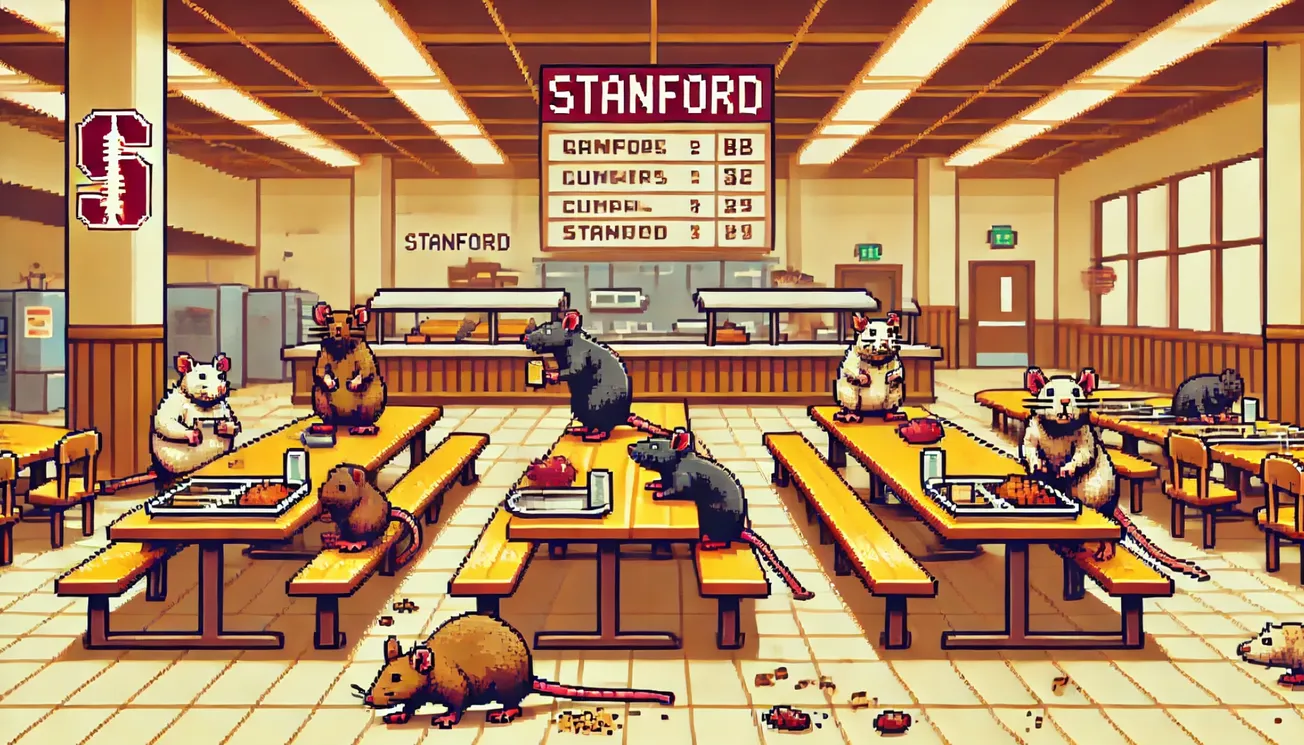Table of Contents
A video of a rodent scampering through Lakeside Dining went viral on Fizz after being published on Tuesday, February 18. The onlooker filmed as the rodent ran through the coffee and juice bar. With 2,400 upvotes, the video became the day's most-viewed post, sparking a maelstrom of debate on Fizz, with students airing their many grievances with Stanford dining.
One anonymous post complained, “This video needs to spark the revolution please don't stop talking about it. Mandatory $45 a day for extortion for no protein and $3 quality” received 2.3k upvotes. Another student chimed in, stating “The dining plan cannot be mandatory if there are rats and cancerous levels of microplastics. Actual extortion.”
The anonymous posters reference a number of newfound concerns with the quality of Stanford dining. Price per meal has increased from $9 in 2022 to $15 in 2025 ($13 when adjusted for inflation). Protein has been reduced in line with sustainability goals, while meats have repeatedly been replaced by inexpensive basa and tilapia fish.
Worse yet, PlasticList researchers also identified cancerous microplastics in Stanford’s dining hall food. The PlasticList report found that Stanford’s beans, chicken, rice and cauliflower contain above-average amounts of chemicals known to result in cancer, reproductive harm and other effects. Di(2-ethylhexyl) phthalate (DEHP), bisphenol A (BPA) and bis(2-ethylhexyl) adipate (DEHA) were detected at the 89-93th, 50-60th and 99-100th percentiles, respectively.
The issue of mandatory meal plans, raised by Fizz users, has been ongoing since the 1920s. Beginning in the Fall of 1925, Stanford instituted mandatory meal plans. Since its inception, this policy has seen students complain of poor food quality. Mandatory meal plans render dining halls immune from the forces of competition that are necessary to hold it accountable to students preferences. Eliminating choice meant students lost their only reproach against poor food quality: eating elsewhere.
The mandatory nature of the meal plan, which requires students to pay regardless of their dietary preferences or concerns, remains a point of contention. Given the recent debate concerning food safety and affordability, the question remains: Should students be required to participate in the meal plan, or should they have the option to seek alternatives?
The answer is a resounding no. A competitive dining system wouldn’t just bring better food and lower prices—it might also bring something even more crucial: rat traps. When businesses have to earn their customers rather than rely on a captive audience, they have every incentive to keep their food safe, their prices fair, and their rat traps tightly wound.









